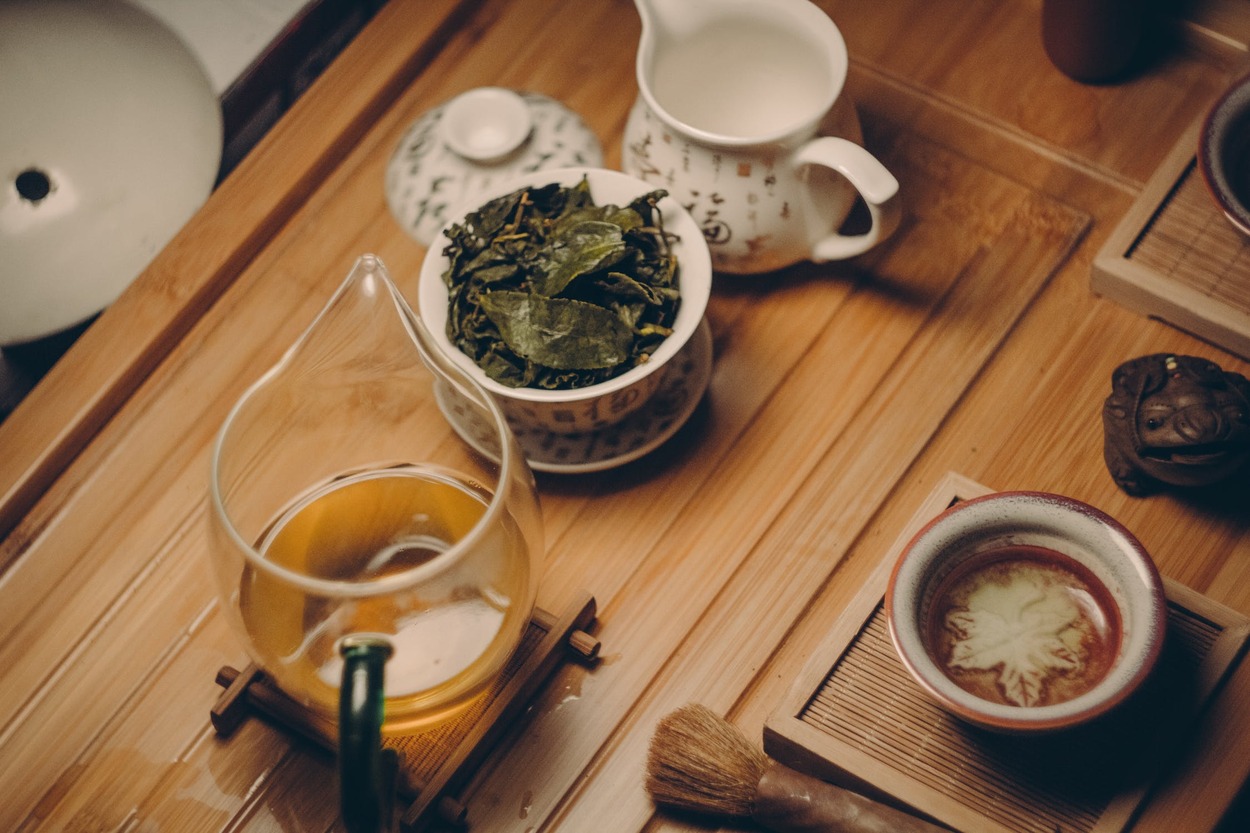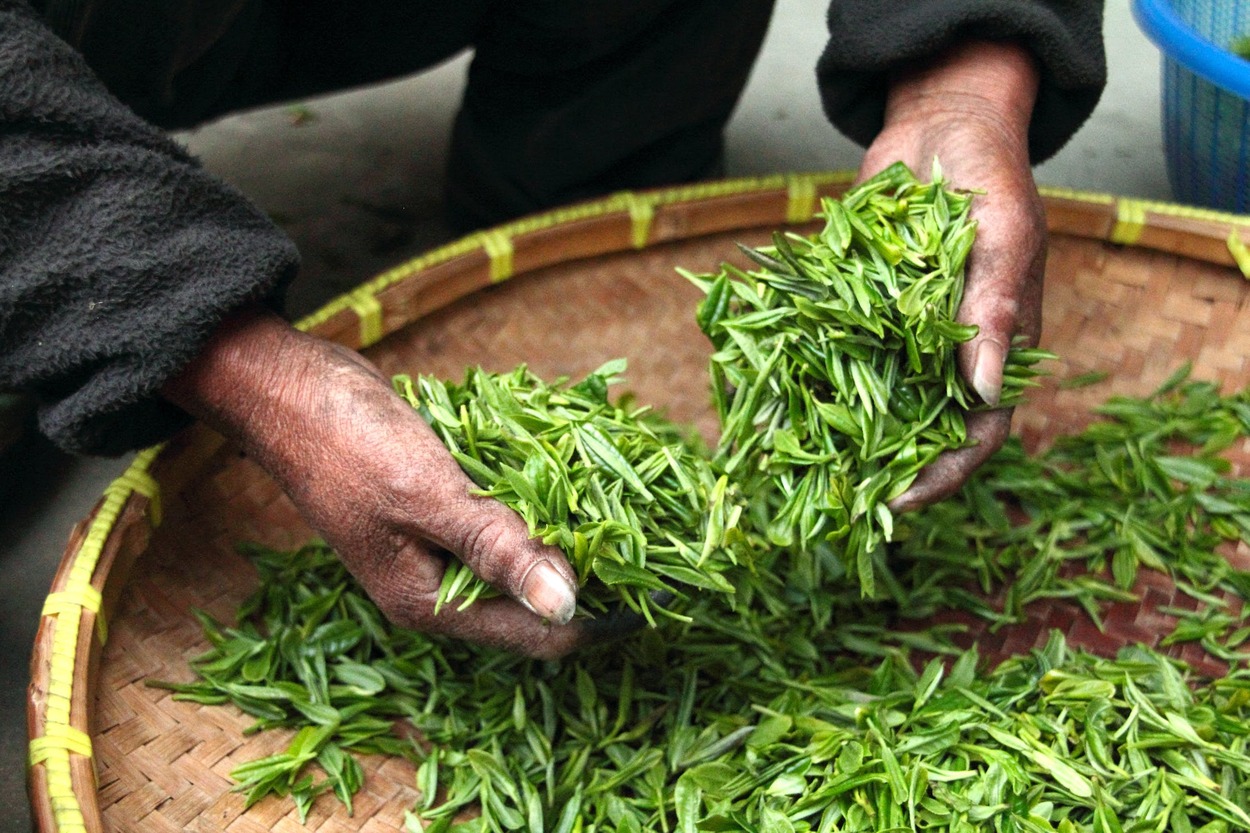Tea is a common beverage created by steeping dried tea plants, leaves, buds, or twigs in hot water. People of many ages, especially elders, appreciate this fragrant and savory beverage, which has been around for generations. It is an accessible and enjoyable drink that is well-liked by millions of people worldwide.

Tea is a preferred beverage before bed or while under stress because of its relaxing and soothing properties. It is also often consumed for its various health benefits, which include antioxidant properties, potential cancer–fighting effects, and improved heart health.
The taste of tea cannot be defined as an ensemble, because the taste varies depending on the type of tea, the processing methods, and the techniques of brewing being used. Adding on to that, the taste of tea can also be impacted by the tea leaves quality, the temperature, and brewing duration, as well as the water usage and additional adds-on, like sugar or honey.
In this blog, you will get to know the different types of common tea that can be found vastly everywhere around the world and the taste description of those teas when consumed.
The Most Common Teas

There are so many variations and products of teas in the market these days, and each kind has a different taste and aroma.
Although that is true, it is still considerate to note that all teas come from the same plant called Camellia Sinensis.
Some of the most common types of tea include:
| Black tea | Black tea is the most consumed tea and a fine staple of the tea world. It is made from oxidized tea leaves that contain the most caffeine out of all the common teas. Some famous examples of Black tea are Earl Grey, English Breakfast, and Ceylon Tea. |
| Green tea | This type of tea is made from unoxidized tea leaves, which originated in China but is currently produced in many Asian countries such as Korea, Japan, and India. Some notable green teas include Sencha (Japan), Matcha (Japan), Dragonwell (China), and Gunpowder. |
| Oolong tea | Oolong tea is typically made from the leaves of the Camellia sinensis plant, which is the same plant used to make black tea and green tea. This tea is the medial tea variation between black tea and green tea, and it is most popular in being used in Chinese Milk tea or Boba. Some examples of Oolong tea are Tie Guan Yin and Da Hong Pro from China. |
| Herbal tea | Herbal tea is a distinct exception to tea, as it is not made from the same originating plant, Camellia Sinensis that is used to make black tea, green tea, and oolong tea. It is made from a variety of plants, spices, herbs, and fruits that are mostly used to integrate with human health factors. Examples of herbal tea are Hibiscus tea, Chamomile tea, Ginger tea, and Peppermint tea. |
| White tea | This tea is made from young, unopened tea buds and leaves and is the least processed of all teas. Examples include Silver Needle and Bai Hao Yinzhen. |
The Taste of Tea
As I have mentioned above, the taste of tea can vary greatly depending on the type of tea, how it was processed, and how it was brewed.

Black tea, for starters, is the most common type of tea and is well known for its strong, robust, rich, and slightly bitter or astringent flavor. Moreover, it is generally stronger and more intense than other types of tea such as green or white tea.
Green tea is famed for its mild, refreshing flavor and fresh, green aroma. It is often less astringent or bitter than black tea and has a more delicate taste profile. It is occasionally described as vegetal or herbal with a slightly nutty aroma.
Some green teas may have a slight sweetness or floral scent, while others may have a more pronounced umami flavor.
Meanwhile, oolong tea is a partially oxidized tea that is in the middle of black tea and green tea in terms of flavor, color, and caffeine content. It often has a distinct, floral flavor with a hint of sweetness and a slight bitterness.
Certain oolong teas may taste sweet or nutty, while others may taste more strongly of the earth or smoke. Oolong tea is frequently characterized as having a smooth flavor with a lasting aftertaste that is enjoyable and refreshing.
Herbal teas, also known as tisanes, are not made from the leaves of the Camellia sinensis plant like other types of tea but are instead made by steeping various herbs, fruits, flowers, and spices in hot water.
The taste of herbal tea can vary widely depending on the specific ingredients used, but it is generally described as being naturally sweet or slightly tart, with a mild to medium flavor intensity.
Herbal teas are often enjoyed plain or with a touch of honey or other natural sweeteners to enhance their flavor.
They are also widely used for their medicinal properties, as many herbs and spices have been elucidated to have a range of health benefits.
White tea is known for its delicate and subtle flavor profile, which is often described as light, sweet, and slightly floral or grassy.
It is the least processed of all tea types, with the leaves of the Camellia sinensis plant picked when they are still young and tender before they have fully opened.
The taste of white tea is generally milder and less astringent than other types of tea, while some white teas may have a slightly nutty or fruity flavor.
To conclude, it is very difficult to find just one adjective to describe this vast product since there are so many variations out there.
However, the taste of tea is heavily impacted by factors such as the specific variety of tea, the growing conditions, the level of oxidation or processing, and the brewing method.
Whether you prefer a light and refreshing tea or a bold and robust one, there is a tea out there to suit every taste.
If you want to learn more about the history of tea, make sure to check this Ted-talk video above to gain a deeper insight into this topic.
Frequently Asked Questions (FAQs)

What is Tea Made From?
Tea is made from the leaves of the Camellia sinensis plant, which is native to China and India. There are several varieties of tea, including black, green, white, and oolong, which are distinguished by their level of oxidation or processing.
Does Tea have Caffeine?
Yes, tea contains caffeine, although the amount can vary depending on the type of tea and how it is brewed. Generally, black tea has the most caffeine, followed by oolong tea, green tea, and white tea.
Can you add Milk or Sugar to Tea?
Yes, you can add milk, cream, or sugar to tea if desired. There is a drink called “Milk tea‘ or “Bubble tea‘ when that happens. However, certain types of tea, such as green and white tea, are traditionally consumed plain to allow their natural flavors to shine through.
Can Tea Stain Your Teeth?
Yes, tea can potentially stain your teeth, especially if you consume large amounts of tea or if you do not practice good oral hygiene. Tea contains compounds called tannins, which can cause yellow or brown stains on teeth over time.
Also, If you want to get to know a specific milk tea type, called Thai Tea, and what makes it special and different from other milk tea, make sure to check out the links.
Conclusion
- Tea is a common beverage created by steeping dried tea plants, leaves, buds, or twigs in hot water.
- There are so many variations and products of teas in the market these days, and each kind has a different taste and aroma. However, all teas come from the same source: the Camellia Sinensis plant.
- Black tea, for starters, is the most common type of tea and is well known for its strong, robust, rich, and slightly bitter or astringent flavor. Other teas, such as green, oolong, and white tea are relatively milder and nuttier in flavor.
- You can add milk, cream, or sugar to tea if desired. However, certain types of tea, such as green and white tea, are traditionally consumed plain to allow their natural flavors to shine through.